Sometimes, if there are no birds or wild animals in the vicinity (which is often the case in the heavily-populated parks near my Seattle home) I’ll just sit and take in the scenery …. with camera ready in case something unexpected happens. In Seattle, I can almost always count on crows showing up, even if they’re often camera shy. Since I love photographing urban wildlife, I’ll take any crows that come my way, and I’ll raise you a pellet-casting crow. (More on that in a sec.)
After I posted my last crow image — of the banded crow — a friend on Facebook posted this:
“The Native Americans say that crows move bad energy. Wherever they appear is where they need to be. Interesting perspective.”
I hadn’t heard that particular adage. But it will be on my mind forever more when I’m around crows. In one of my recent favorite books, Crow Planet, author Lyanda Lynn Haupt discusses the confluence of human and crow culture — how crows are synanthropes, thriving alongside humans, often adapting to the disrupted ecology we create. If the above native observation is true, then we can conclude, on a spiritual level, that crows arrive in throngs to heal our broken environments. Well … that’s how I will choose to see it.
So, I was sitting on the beach at Carkeek Park, just north of Seattle, when a group of crows landed near me and started foraging in the sand. I shot this one frame of a crow catching afternoon light, with a bit of sand on his beak.
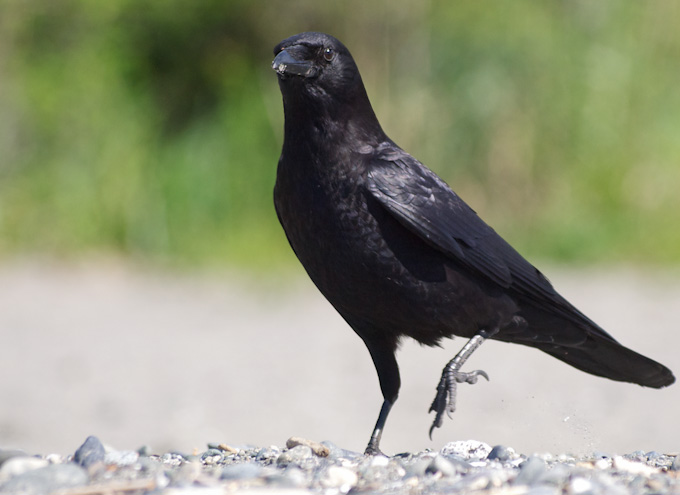
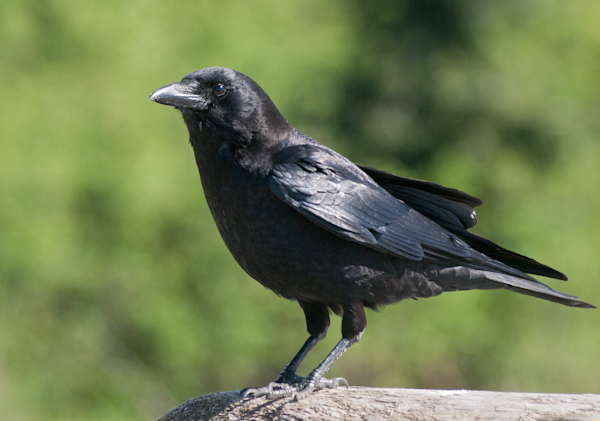
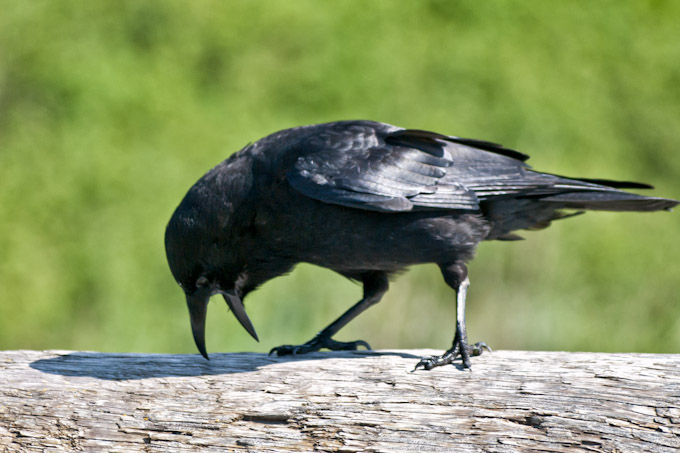
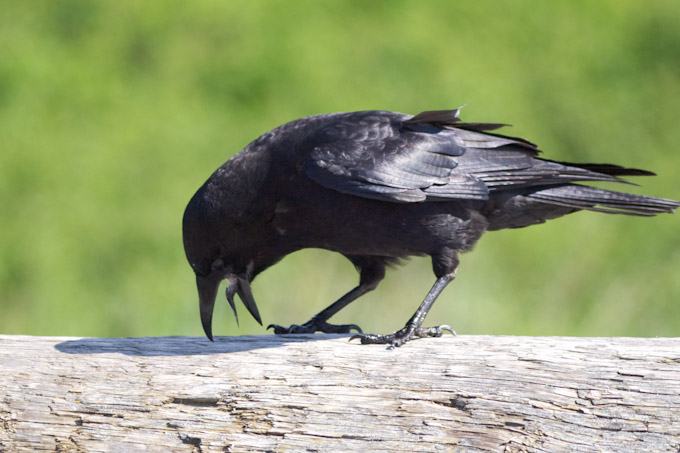
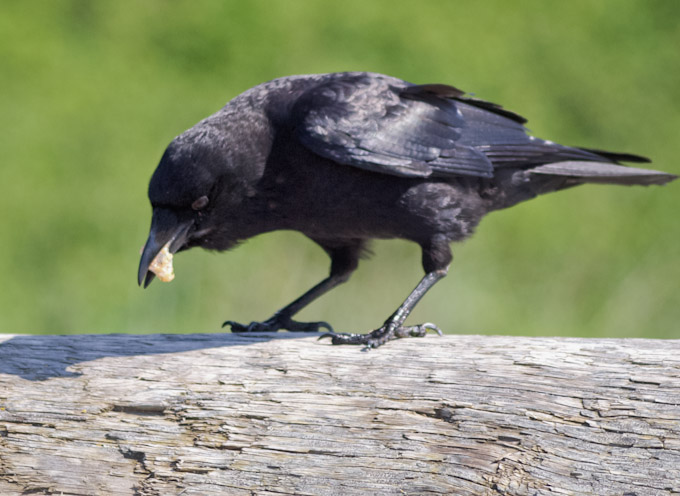
This crow never did cast a pellet. She went through the regurgitation routine at least five times, upchucking a morsel which she then swallowed again. After a several such cycles, she trundled back into the sand to join her group.
I asked my supervisor at the wildlife hospital about other reasons a crow might regurgitate. She speculated that it was a normal pellet-casting routine, even though no pellet resulted here. She also said it could have been part of the crow’s mating behavior. If you have any other insights, I’d love to know. For now, I’m going with the pellet-casting/no-pellet theory.
The focal length here was 150mm which — on my four-thirds lens — equates to 300mm (35mm equivalent with 2x crop factor).

Ingrid,
I have seen other birds try to regurgitate a pellet without succeding, usually though they are scared off by a passing car or person.
I love the thoughts you shared about Crows, maybe they do heal what we as humans have done to this planet.
Mia, when you’ve watched them do this, do they regurgitate, bring up the food, then re-consume? That’s something I hadn’t seen before and it was curious.
I love these kinds of behavior shots and it’s very difficult to get light in the eye when they’re doing it because of the lowered head. I have a series of shots of a Northern Harrier “throwing up”. It wasn’t hacking up a pellet – instead it threw up long gobs of thick, mucousy liquid that hung down almost a foot from its elevated perch. Reminded me a bit of folks who got seasick or had too much to drink…
Ron, I can’t even imagine that sight. Did you ever post them? I need to do a quick search.
Edited to fix a typo above.
Nope, never did post them. If I remember I’ll send you one of those images in the morning.
Make sure to coordinate it with my breakfast time. d:-) Seriously though … can’t wait to see them. It will be a first for me.
Ok, I just sent you a couple of those shots. I hope they go well with your breakfast!
Mmmm, nice combination. (At least food prep in the wildlife kitchen helped me compartmentalize these things.) Do you have any idea if the harrier was healthy? If Kieran (Next Door Nature) stops by, she might be able to say. She has a more-than-substantial wildlife rehabilitation resumé.
Mating behavior, eh? I guess nothing says “I want you” like demonstrating your bulimia LOL
I know, lovely isn’t it? I haven’t double-sourced that speculation. I wonder if it’s a hot ticket in the crow world.
The only sort of behaviour I’ve seen like this, though not in crows, has been small birds that mis-swallow, gulp, then regurgitate and fly off. Apart from swallowing something too large for them, sometimes I wonder if it’s actually because they don’t taste it properly on first swallow or think it’s going to taste differently from how it does. I hadn’t realised just how individual birds are when it comes to flavour, but they are.
You might be right about that. Kieran (above) was nice enough to investigate another situation for me — a raptor regurgitating — and the raptor center commented about how young or hungry raptors will sometimes try things that they then discover are unpalatable.